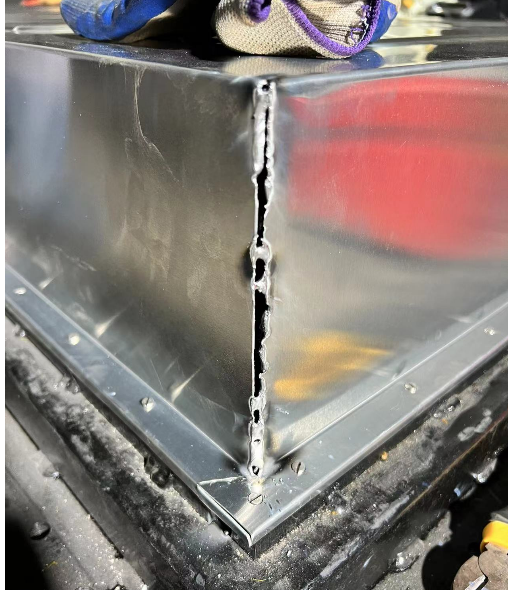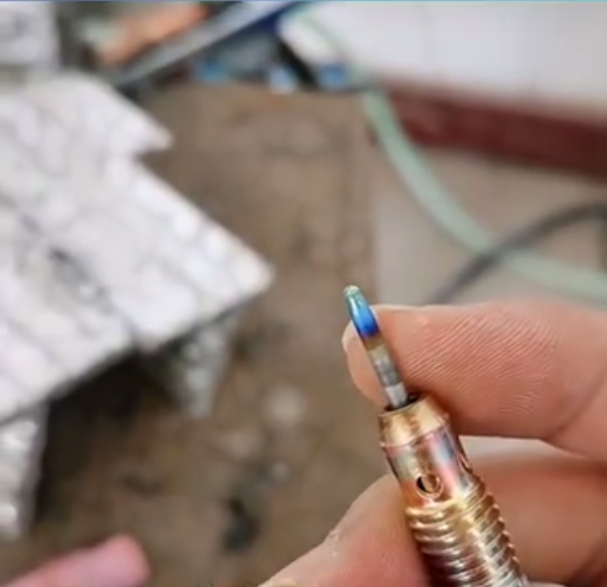It is tough work and a big challenge for any green hand to weld thin aluminum, not to mention welding aluminum sheets as thin as 1mm. What is the biggest challenge for welding thin aluminum? Burn through. In order to successfully weld thin aluminum, we’d like to discuss why it is difficult to weld thin aluminum.

weld thin aluminum burn through
It would be better if you get some welding experience on how to weld aluminum thick aluminum welding. When you are getting experienced you could come back and weld thin aluminum.
If you need more suggestions on how to weld aluminum for beginners, please click here for more advice.
Why is it difficult to weld think aluminum?
Firstly, we all know that aluminum itself is very difficult to weld. It is very easy to form a layer of thin oxidation film. The melting point of aluminum oxidation is as high as 2049℃, which is so much higher when compared with that of aluminum, 660℃. It is very easy to burn through when welding aluminum, especially when you weld thin aluminum.
Secondly aluminum won’t change its color when it is heated. So it brings a lot of difficulties for welders to estimate what the temperature is when heating it. Only experienced workers could tell if it reaches a proper temperature for welding.
For all those reasons, aluminum welding is a much hard job than stainless steel welding. It is not surprising to see that green hand welders burn through when they weld thin aluminum at the beginning.
What are the proper processes to weld thin aluminum?
First of all, when we weld thin aluminum, we must thoroughly clean both sides of the workpieces with a dedicated stainless steel wire brush. The step is very important in welding thin aluminum. This will wipe away the outer oxide layer. As we mentioned in the last paragraph, the melting temperature of this oxide layer is significantly higher than the inner aluminum layer. During welding, when you’ve accumulated enough heat to melt the oxidation layer, you would melt the inner as well. It is impossible for you to melt the out layer without melting the inner aluminum layer.
The next process on how to weld thin alum is using a backing plate. Either copper plate or stainless steel plate is workable. Unlike other metals, aluminum doesn’t flow well. Through ER4043 and ER4047 aluminum welding wire flow better by adding silicon to it, other kinds of aluminum filler wire such as er5356 and er5183 don’t flow as well as er4047. If there’s too much heat and won’t flow, it would drop or become welding slag. So it is very useful to use a backing plate, which would support the aluminum weld puddle. Just be sure the backing material you use is clean enough. We suggest that you’d better clean it with acetone.
The third proper process for welding thin alum is aluminum welding wire. Use a thin filler wire to weld the thin plate. For a 1mm aluminum plate, we recommend you use 0.9mm or 0.8mm filler wire.
A thicker filler wire needs a bigger electric current, which is also easy to lead to burn through.
The fourth process is to keep the proper shape of the tungsten. Usually, a ball, hemispherical tungsten tip is workable well in aluminum welding. The tungsten shape used in stainless steel welding is too sharp for welding aluminum.

The last step, no matter what you’re welding, safety helmet, gloves, eyeglasses, and other protection measures are necessary.
Are the processes helpful in thin aluminum welding? If you have any other suggestions, welcome to contact us.

